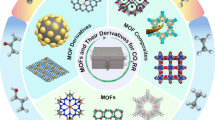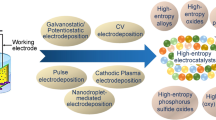Abstract
Electrochemical treatment processes can significantly contribute to the protection of the environment through the minimization of waste and toxic materials in effluents. From a pharmaceutical point of view and due to the existing resemblance between the electrochemical and biological reactions, it can be assumed that the oxidation mechanisms on the electrode and in the body share similar principles. In this paper, the application of electrochemical studies in the design of an environmentally friendly method was delineated for the new hydrocaffeic acid (HCA, 3,4-dihydroxy hydrocinnamic acid) derivatives synthesis at carbon electrodes in an undivided cell. In this cell, the EC mechanism reaction was involved, comprising two steps alternatively; (1) electrochemical oxidation and (2) chemical reaction. In particular, the electro-organic reactions of HCA, an important biological molecule, were studied in a water–acetonitrile (90:10 v/v) mixture in the presence of benzenesulfinic acid (3) and p-toluenesulfinic acid (4). The research included the use of a variety of experimental techniques, such as cyclic voltammetry, controlled-potential electrolysis and product spectroscopic identification.





Similar content being viewed by others
References
Heltog MGL, Hollman PCH, Putte B (1993) J Agric Food Chem 41:1242
Dupont MS, Bennet RN, Mellon FA, Williamson G (2002) J Nutr 132:172
Leontowicz H, Gorinstein S, Lojek A, Leontowicz M, Ciz M, Solvia-Fortuny R, Park YS, Jung ST, Trakhtenberg S, Martin-Belloso O (2002) J Nutr Biochem 13:603
Li B, Zhang D, Luo Y, Chen X (2006) Chem Pharm Bull 54:297
Cowan MM (1999) Clin Microbial Rev 12:564
Mibu N, Yokomizo K, Uyeda M, Sumoto K (2005) Chem Pharm Bull 53:1171
Chan RI, San RH, Stich HF (1986) Cancer Lett 31:27
Chen JH, Shao Y, Huang M-T, Chin CK, Ho C-T (1996) Cancer Lett 108:211
Huang M-T, Smart RC, Wong CQ, Conney AH (1988) Cancer Res 48:5941
Laranjinha J, Vierira O, Almeida L, Madeira V (1996) Biochem Pharmacol 51:395
Feng Z, Jiang J, Wang Y, Zhang P (2005) Chem Pharm Bull 53:1330
Nagaoka T, Banskota AH, Tezuka Y, Saiki I, Kadota S (2002) Bioorg Med Chem 10:3351
Nomura M, Kaji A, Ma W, Miyamoto K, Dong Z (2001) Mol Carcinog 31:83
Etzenhouser B, Hansch C, Kapur S, Selassie CD (2001) Bioorg Med Chem 9:199
Azzem MA, Zahran M, Haggag E (1994) Bull Chem Soc Jpn 67:1390
Nourmohammadi F, Golabi SM, Saadnia A (2002) J Electroanal Chem 529:12
Nematollahi D, Rahchamani RA, Malakzadeh M (2003) Synth Commun 33:2269
Bayandori Moghaddam A, Kobarfard F, Fakhari AR, Nematollahi D, Hosseiny Davarani SS (2005) Electrochim Acta 51:739
Ke NJ, Lu S-S, Cheng S-H (2006) Electrochem Commun 8:1514
Bayandori Moghaddam A, Kobarfard F, Hosseiny Davarani SS, Nematollahi D, Shamsipur M, Fakhari AR (2006) J Electroanal Chem 586:161
Mathiyarasu J, Senthilkumar S, Phani KLN, Yegnaraman V (2005) J Appl Electrochem 35:513
Misico RI, Forzani ES (2003) Electrochem Commun 5:449
Carvalho RM, Kubota LT, Rath S (2003) J Electroanal Chem 548:19
Selvaraju T, Ramaraj R (2003) J Appl Electrochem 33:759
Bayandori Moghaddam A, Ganjali MR, Norouzi P, Latifi M (2006) Chem Pharm Bull 54:1391
Suzen S, Dermircigil BT, Buyukbingol E, Ozkan SA (2003) New J Chem 27:1007
Acknowledgments
The financial support provided by the Karaj Branch, Islamic Azad University Research Affairs is gratefully acknowledged.
Author information
Authors and Affiliations
Corresponding author
Rights and permissions
About this article
Cite this article
Haddad Dabaghi, H., Bayandori Moghaddam, A., Kazemzad, M. et al. A strategy for the electro-organic synthesis of new hydrocaffeic acid derivatives. J Appl Electrochem 38, 409–413 (2008). https://doi.org/10.1007/s10800-007-9453-7
Received:
Revised:
Accepted:
Published:
Issue Date:
DOI: https://doi.org/10.1007/s10800-007-9453-7




